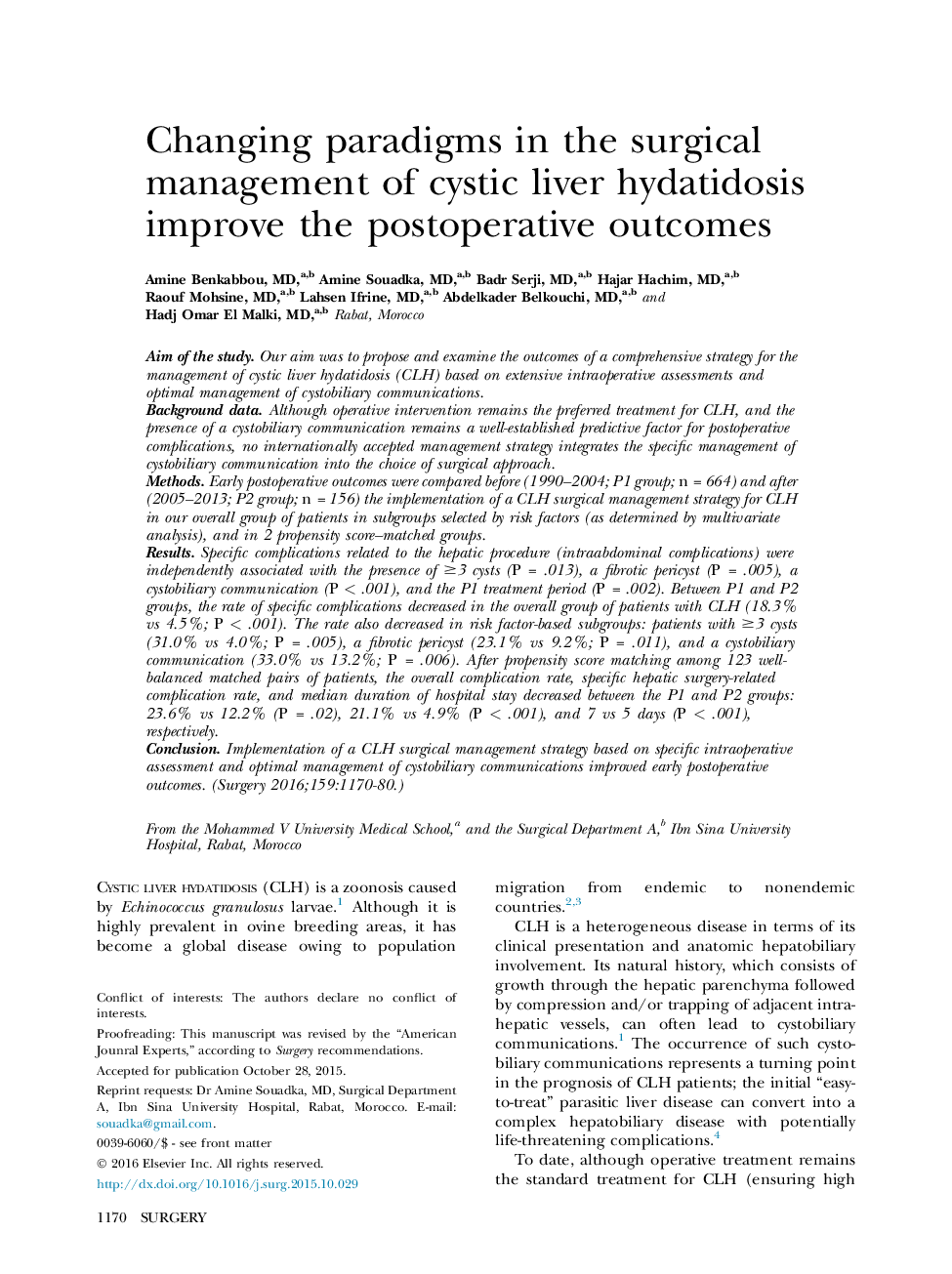| Article ID | Journal | Published Year | Pages | File Type |
|---|---|---|---|---|
| 4306507 | Surgery | 2016 | 11 Pages |
Aim of the studyOur aim was to propose and examine the outcomes of a comprehensive strategy for the management of cystic liver hydatidosis (CLH) based on extensive intraoperative assessments and optimal management of cystobiliary communications.Background dataAlthough operative intervention remains the preferred treatment for CLH, and the presence of a cystobiliary communication remains a well-established predictive factor for postoperative complications, no internationally accepted management strategy integrates the specific management of cystobiliary communication into the choice of surgical approach.MethodsEarly postoperative outcomes were compared before (1990–2004; P1 group; n = 664) and after (2005–2013; P2 group; n = 156) the implementation of a CLH surgical management strategy for CLH in our overall group of patients in subgroups selected by risk factors (as determined by multivariate analysis), and in 2 propensity score–matched groups.ResultsSpecific complications related to the hepatic procedure (intraabdominal complications) were independently associated with the presence of ≥3 cysts (P = .013), a fibrotic pericyst (P = .005), a cystobiliary communication (P < .001), and the P1 treatment period (P = .002). Between P1 and P2 groups, the rate of specific complications decreased in the overall group of patients with CLH (18.3% vs 4.5%; P < .001). The rate also decreased in risk factor-based subgroups: patients with ≥3 cysts (31.0% vs 4.0%; P = .005), a fibrotic pericyst (23.1% vs 9.2%; P = .011), and a cystobiliary communication (33.0% vs 13.2%; P = .006). After propensity score matching among 123 well-balanced matched pairs of patients, the overall complication rate, specific hepatic surgery-related complication rate, and median duration of hospital stay decreased between the P1 and P2 groups: 23.6% vs 12.2% (P = .02), 21.1% vs 4.9% (P < .001), and 7 vs 5 days (P < .001), respectively.ConclusionImplementation of a CLH surgical management strategy based on specific intraoperative assessment and optimal management of cystobiliary communications improved early postoperative outcomes.
